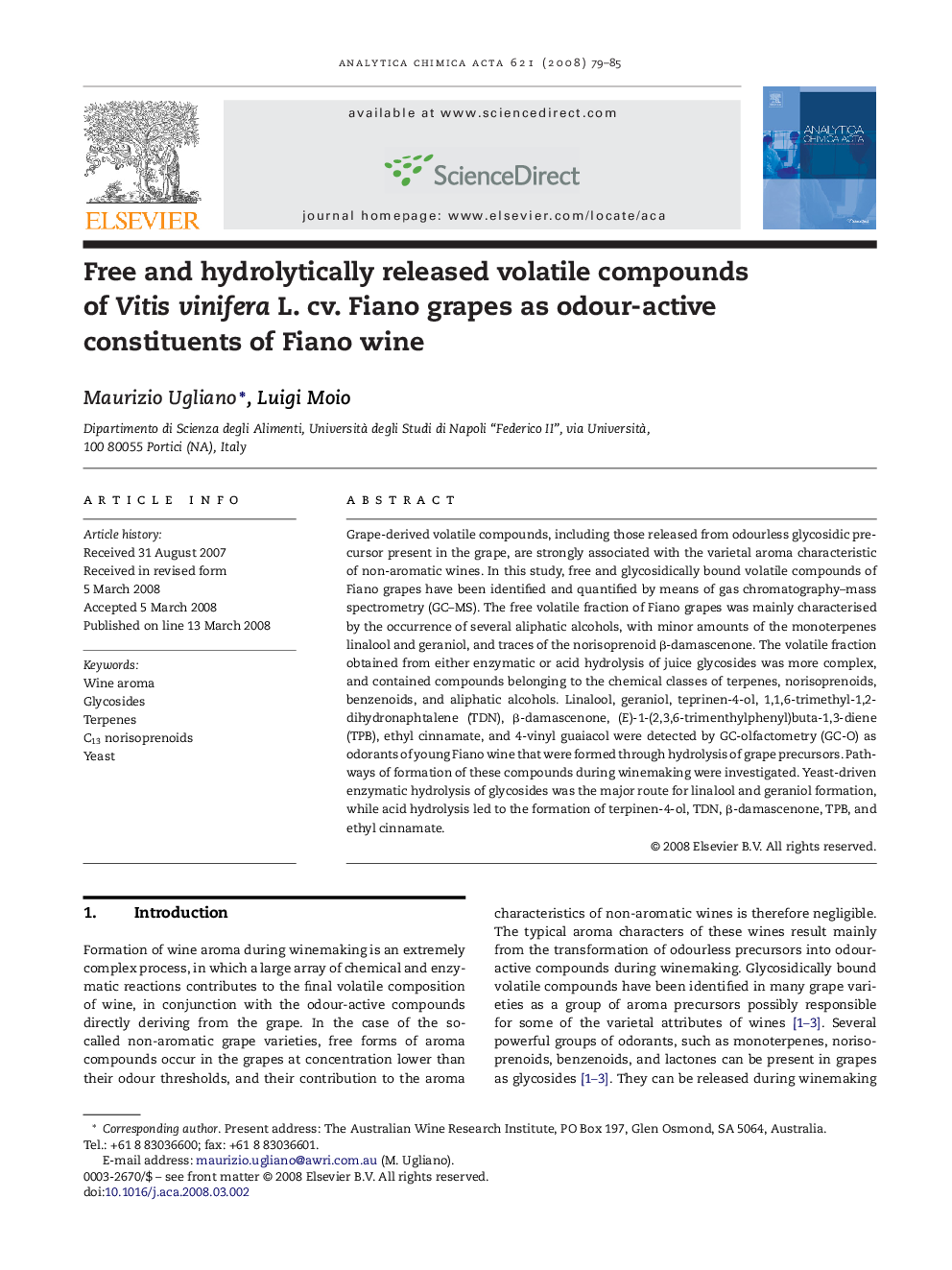| Article ID | Journal | Published Year | Pages | File Type |
|---|---|---|---|---|
| 1169292 | Analytica Chimica Acta | 2008 | 7 Pages |
Grape-derived volatile compounds, including those released from odourless glycosidic precursor present in the grape, are strongly associated with the varietal aroma characteristic of non-aromatic wines. In this study, free and glycosidically bound volatile compounds of Fiano grapes have been identified and quantified by means of gas chromatography–mass spectrometry (GC–MS). The free volatile fraction of Fiano grapes was mainly characterised by the occurrence of several aliphatic alcohols, with minor amounts of the monoterpenes linalool and geraniol, and traces of the norisoprenoid β-damascenone. The volatile fraction obtained from either enzymatic or acid hydrolysis of juice glycosides was more complex, and contained compounds belonging to the chemical classes of terpenes, norisoprenoids, benzenoids, and aliphatic alcohols. Linalool, geraniol, teprinen-4-ol, 1,1,6-trimethyl-1,2-dihydronaphtalene (TDN), β-damascenone, (E)-1-(2,3,6-trimenthylphenyl)buta-1,3-diene (TPB), ethyl cinnamate, and 4-vinyl guaiacol were detected by GC-olfactometry (GC-O) as odorants of young Fiano wine that were formed through hydrolysis of grape precursors. Pathways of formation of these compounds during winemaking were investigated. Yeast-driven enzymatic hydrolysis of glycosides was the major route for linalool and geraniol formation, while acid hydrolysis led to the formation of terpinen-4-ol, TDN, β-damascenone, TPB, and ethyl cinnamate.
